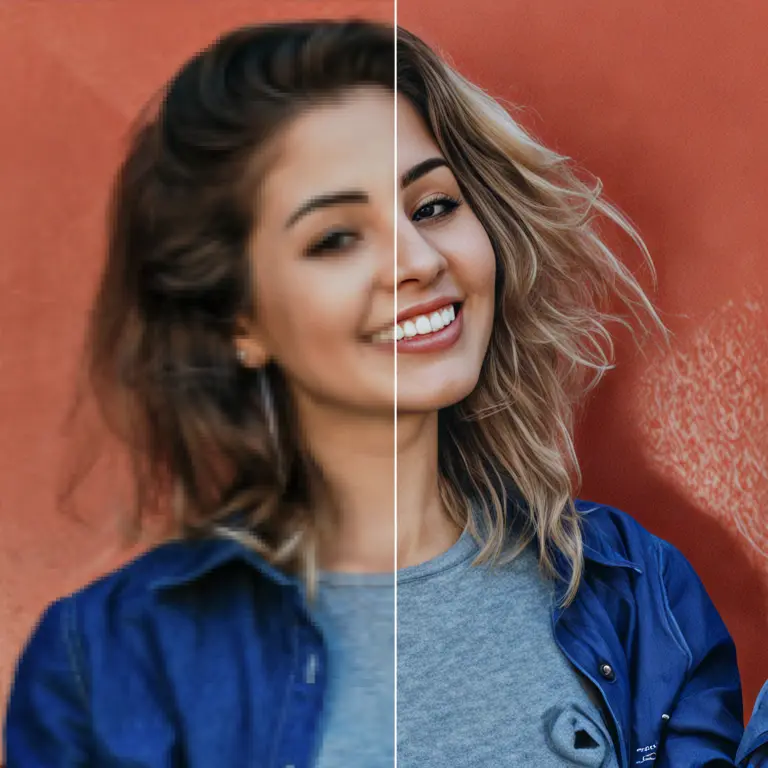ComfyUI Node: ImageSegmentation
ImageSegmentation
Categoryimage/segmentation
Nourepide (Account age: 3130days) Extension
Allor Plugin Latest Updated
2024-05-22 Github Stars
0.25K
How to Install Allor Plugin
Install this extension via the ComfyUI Manager by searching for Allor Plugin- 1. Click the Manager button in the main menu
- 2. Select Custom Nodes Manager button
- 3. Enter Allor Plugin in the search bar
Visit ComfyUI Online for ready-to-use ComfyUI environment
- Free trial available
- 16GB VRAM to 80GB VRAM GPU machines
- 400+ preloaded models/nodes
- Freedom to upload custom models/nodes
- 200+ ready-to-run workflows
- 100% private workspace with up to 200GB storage
- Dedicated Support
ImageSegmentation Description
Facilitates image segmentation for AI artists with advanced models, supporting alpha matting for clean outputs.
ImageSegmentation:
The ImageSegmentation node is designed to facilitate the process of segmenting images, which involves identifying and isolating specific regions or objects within an image. This node is particularly useful for AI artists who need to separate foreground elements from the background, enabling more precise and creative image manipulation. By leveraging advanced models and techniques, the node can handle various types of images, including photographic and anime styles. The node supports alpha matting, which enhances the quality of the segmentation by refining the edges of the segmented regions. This ensures that the output is clean and professional, making it easier to integrate the segmented images into new compositions or further processing.
ImageSegmentation Input Parameters:
images
This parameter accepts a list of images that you want to segment. Each image in the list will be processed individually to identify and isolate specific regions or objects.
model
Specifies the model to be used for image segmentation. Options include "isnetis" for anime-style images, "modnet-p" for photographic images, and "modnet-w" for webcam images. The choice of model affects the segmentation quality and style.
alpha_matting
A boolean parameter that determines whether alpha matting should be applied. Alpha matting helps refine the edges of the segmented regions, making them smoother and more natural. Set to "true" to enable alpha matting.
alpha_matting_foreground_threshold
Defines the threshold for the foreground in alpha matting. This value helps in distinguishing the foreground from the background. A higher value makes the foreground more prominent. Typical values range from 0 to 255.
alpha_matting_background_threshold
Defines the threshold for the background in alpha matting. This value helps in distinguishing the background from the foreground. A higher value makes the background more prominent. Typical values range from 0 to 255.
alpha_matting_erode_size
Specifies the size of the erosion applied during alpha matting. Erosion helps in refining the edges by reducing noise. The value is typically a small integer, such as 1 or 2.
post_process_mask
A boolean parameter that determines whether post-processing should be applied to the segmentation mask. Post-processing can help in further refining the segmented regions. Set to "true" to enable post-processing.
mean_x, mean_y, mean_z
These parameters define the mean values for the x, y, and z channels, respectively. They are used for normalizing the images before segmentation. Typical values are around 0.5.
std_x, std_y, std_z
These parameters define the standard deviation values for the x, y, and z channels, respectively. They are used for normalizing the images before segmentation. Typical values are around 0.5.
width, height
These parameters specify the width and height to which the images should be resized before segmentation. This ensures that the images are processed at a consistent size, improving the accuracy of the segmentation.
ImageSegmentation Output Parameters:
IMAGE
The output is a tensor stack of the segmented images. Each image in the stack corresponds to an input image, with the segmented regions isolated and ready for further use. The output maintains the same order as the input images, ensuring easy mapping between input and output.
ImageSegmentation Usage Tips:
- For best results, choose the model that best matches the style of your images (e.g., "isnetis" for anime, "modnet-p" for photographs).
- Enable alpha matting to achieve smoother and more natural edges in the segmented regions.
- Adjust the alpha matting foreground and background thresholds to fine-tune the segmentation quality.
- Use post-process mask to further refine the segmented regions, especially if the initial segmentation is not perfect.
- Normalize your images using the mean and standard deviation parameters to improve segmentation accuracy.
ImageSegmentation Common Errors and Solutions:
"Invalid model specified"
- Explanation: The model name provided does not match any of the supported models.
- Solution: Ensure that the model parameter is set to one of the following: "isnetis", "modnet-p", or "modnet-w".
"Alpha matting threshold out of range"
- Explanation: The alpha matting foreground or background threshold is set outside the acceptable range (0-255).
- Solution: Adjust the threshold values to be within the range of 0 to 255.
"Erode size must be a positive integer"
- Explanation: The alpha matting erode size is set to a non-positive value.
- Solution: Set the erode size to a positive integer, such as 1 or 2.
"Image normalization parameters are incorrect"
- Explanation: The mean or standard deviation values for normalization are not set correctly.
- Solution: Ensure that the mean and standard deviation values are set to appropriate values, typically around 0.5.
"Image dimensions not specified"
- Explanation: The width and height parameters for resizing the images are not provided.
- Solution: Specify the width and height to which the images should be resized before segmentation.
ImageSegmentation Related Nodes
RunComfy is the premier ComfyUI platform, offering ComfyUI online environment and services, along with ComfyUI workflows featuring stunning visuals. RunComfy also provides AI Playground, enabling artists to harness the latest AI tools to create incredible art.


